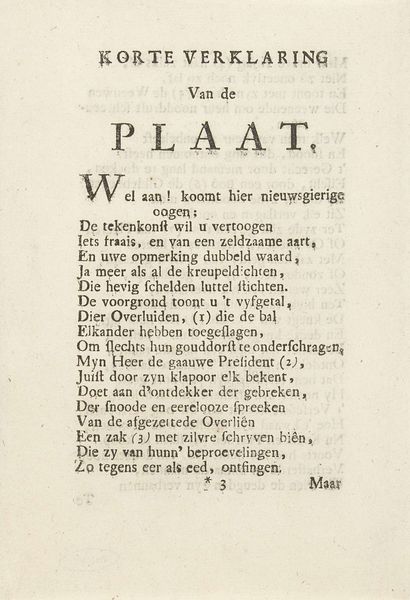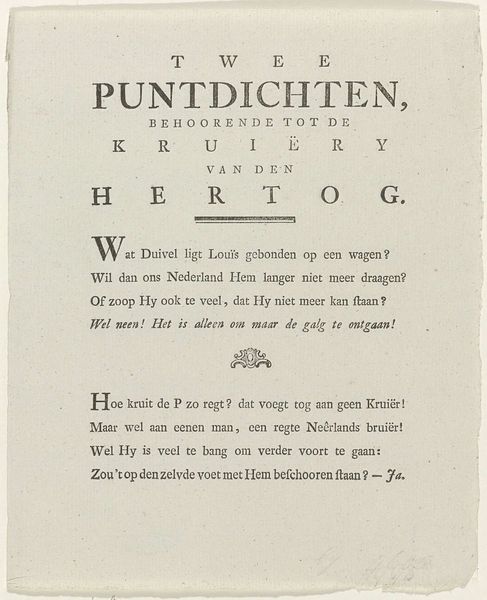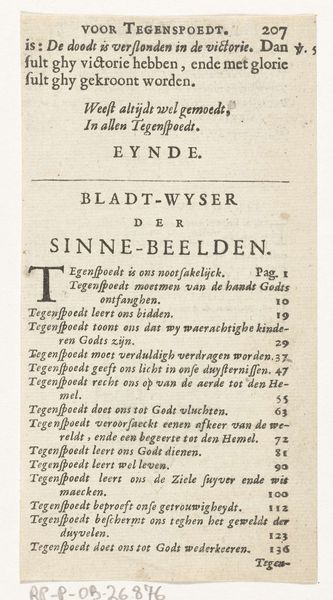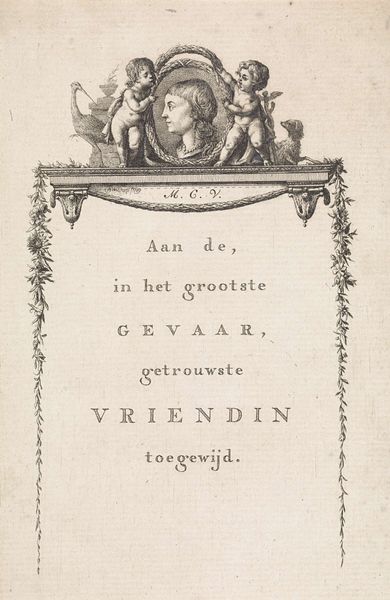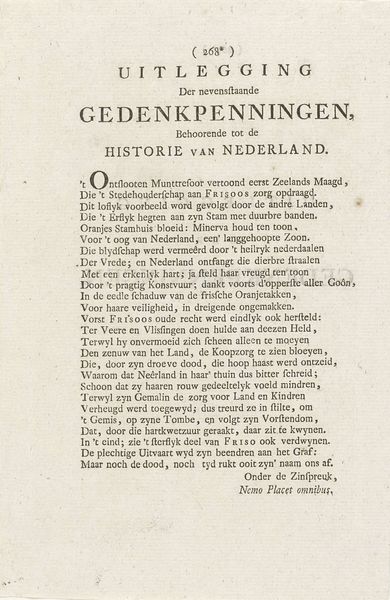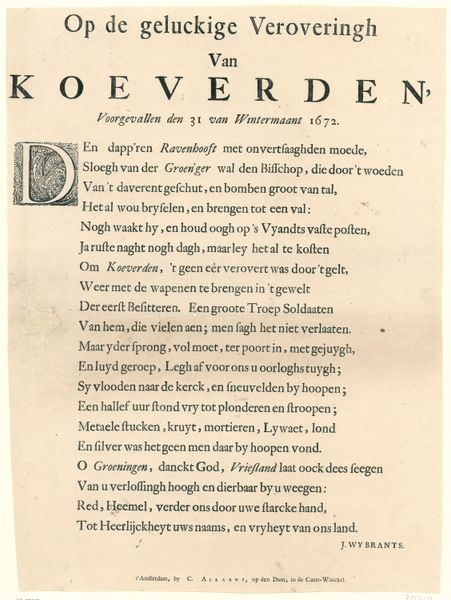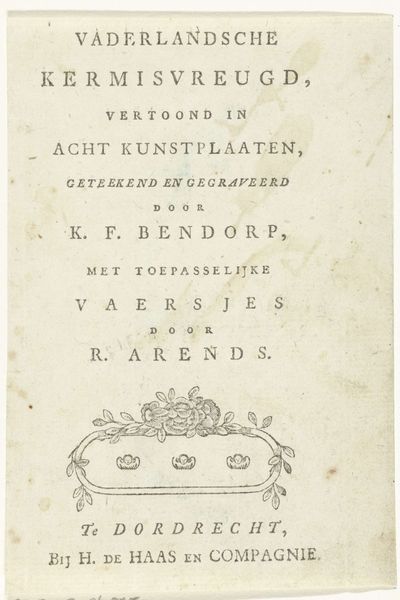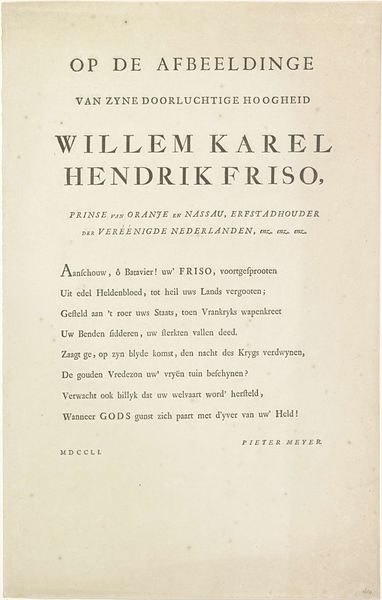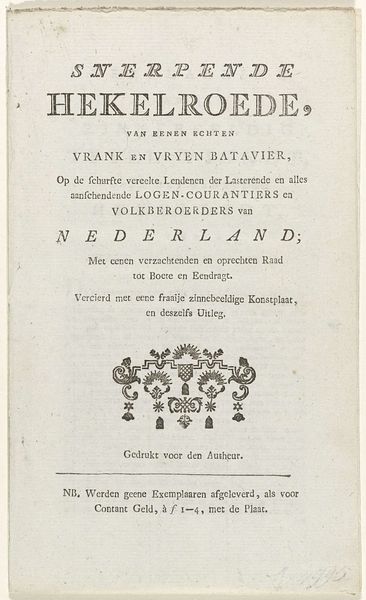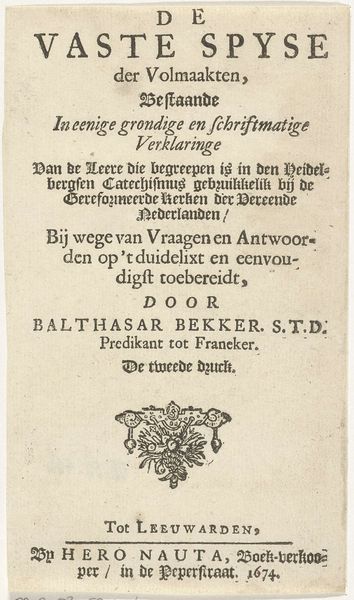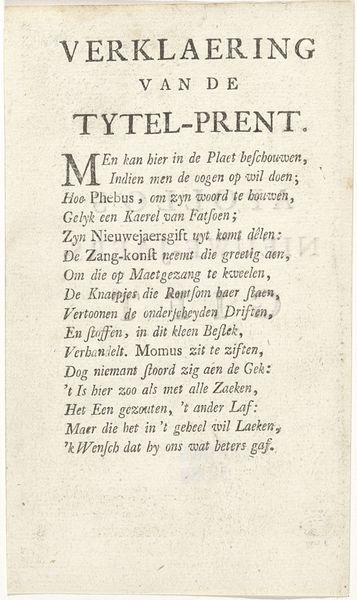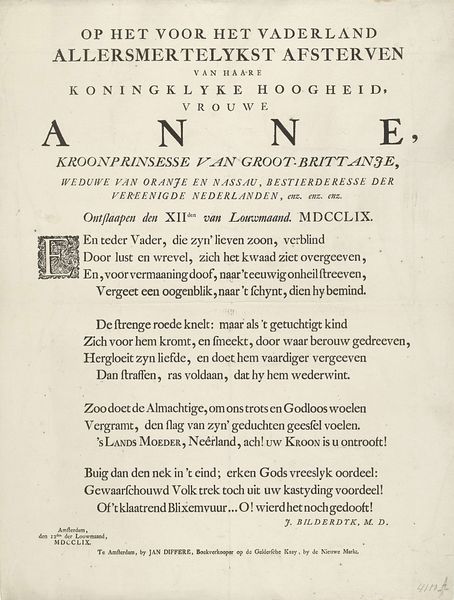
graphic-art, print, textile, paper, typography, engraving
#
graphic-art
#
neoclacissism
#
hand written
# print
#
old engraving style
#
hand drawn type
#
hand lettering
#
textile
#
paper
#
personal sketchbook
#
typography
#
hand-written
#
hand-drawn typeface
#
pen work
#
sketchbook drawing
#
sketchbook art
#
engraving
#
calligraphy
Dimensions: height 160 mm, width 98 mm
Copyright: Rijks Museum: Open Domain
Editor: This engraving from 1813 is titled "Explanation of the Caricature of Napoleon on the Stool." It's stark, just black ink on paper, and framed with these delicate, almost floral motifs. I'm struck by its directness. How do you interpret this work, especially considering its historical context? Curator: This piece exists at a fascinating intersection. It’s clearly an act of political dissent, using humor to undermine Napoleon’s authority. Considering the period, what does it tell us about the role of satire and visual culture in shaping public opinion during times of conflict and occupation? Editor: Well, the caricature aims to ridicule Napoleon, but is there a deeper cultural commentary at play? Curator: Absolutely. The visual language points to the emasculation of Napoleon – the “kakstoel” (stool) suggests both infantilization and humiliation. Also, consider the intended audience, "ontboeide Nederlanders" (unbound/free Dutchmen): how does the work construct a sense of shared identity and resistance against Napoleonic rule through language and imagery? Is there also a gendered aspect to this ridicule? Editor: A gendered aspect, I hadn't thought of that. It seems there is a real intersection of gender, national identity, and power being mocked here. Curator: Exactly! The print provides an example of visual culture directly engaging with pressing sociopolitical issues. It highlights how art can be a tool to influence social change, or resistance. Editor: I see now how understanding the political context and cultural biases allows us to read a complex set of claims encoded in the imagery and the written word of the engraving. Curator: Precisely! It encourages us to unpack dominant power dynamics.
Comments
No comments
Be the first to comment and join the conversation on the ultimate creative platform.
